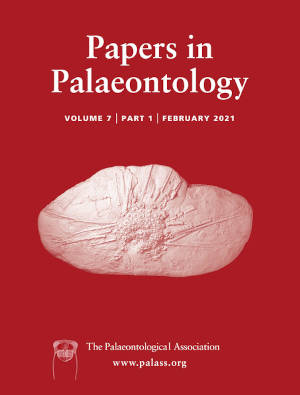Reg. Charity No. 1168330

Cambrian bivalved arthropods are a polyphyletic group of carapace-bearing arthropods that includes stem euarthropods, stem mandibulates and crustaceans. Here, we describe Pakucaris apatis gen. et sp. nov., a new stem mandibulate bivalved arthropod from the middle Cambrian (Wuliuan Stage) Burgess Shale (Marble Canyon, Kootenay National Park, British Columbia, Canada). Two morphotypes of this small arthropod (11.6–26.6 mm long) are recognized, which differ mainly in their size and number of segments, possibly reflecting sexual dimorphism or different anamorphic stages. The carapace presents a dorsal crest extending anteriorly into a small recurved rostrum and two anterolateral processes. Around 20% of the posteriormost body segments and limbs are covered by a large spine-bearing shield. The head bears a pair of eyes, a possible pair of unsegmented appendicular projections and two pairs of segmented appendages. The thorax is multisegmented, homonomous, with weakly sclerotized segments bearing biramous limbs, composed of a stenopodous endopod with c. 20 podomeres and a paddle-shaped exopod. Pakucaris is interpreted as a nektobenthic suspension feeder. Bayesian phylogenetic analysis implies a position within Hymenocarina as stem mandibulates. The posterior shield is regarded as a pygidium, and represents a case of morphofunctional convergent evolution between mandibulates, artiopodans and mollisoniids. Furthermore, Pakucaris adds to a growing number of pygidium-bearing arthropods, potentially hinting at a common developmental pattern across early arthropod evolution. This study not only increases our understanding of the early evolution of mandibulates, but also illustrates a unique case of early evolutionary convergence during the Cambrian Explosion.